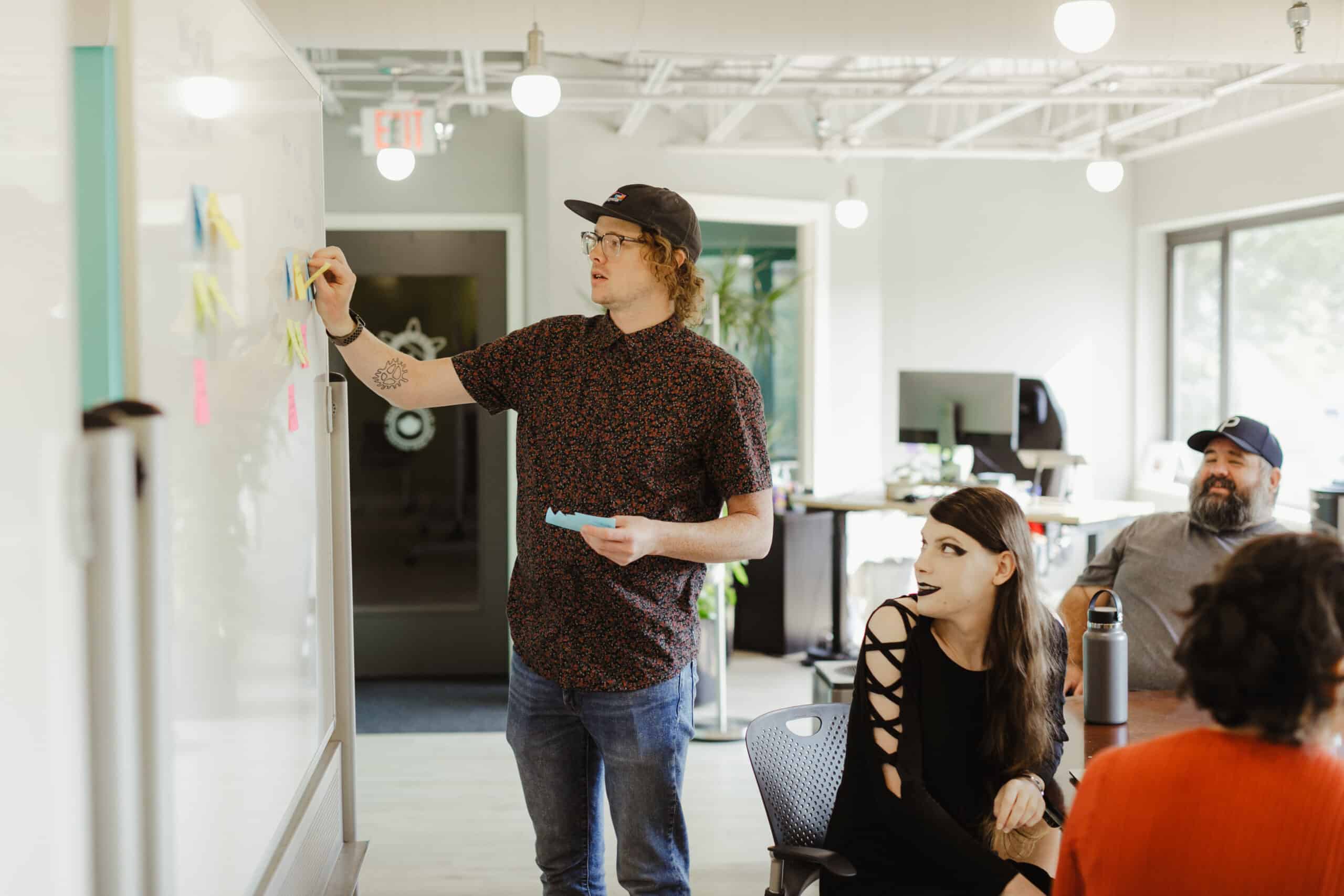Consulting within your own organization is a critical part of being a good consultant in the first place, and it’s something we take seriously here at Atomic. We firmly believe in a “Teach and Learn” mentality. In turn, this empowers us to share knowledge and expertise across the organization, ultimately growing our collective brain trust and strengthening our consulting capabilities.
I’ve been providing design support and consultation to a handful of internal initiatives over the last year. In particular, I’ve helped our small but mighty marketing team. Each time I am tasked with a project like this, I view it as a way to practice my consulting skills, and to improve my ability to deliver value within scope.
I also view it as an opportunity to improve our company, and maybe even make the work lives of my colleagues a little better in the process. Here are a few tips I’d recommend to anyone who finds themselves consulting for their own colleagues:
- Treat them like a client.
- Show up with professionalism.
- Deliver with the same polish.
Treat them like a client.
From the very beginning, it’s important to establish a similar client-consultant relationship, as you might with any other project. Don’t take yourself too seriously, but make sure they know you are taking their request seriously. It will go a long way in instilling confidence and establishing you as a partner in the effort, rather than just someone doing something the other person doesn’t know how to do. You’ll get a lot more out of it, too.
When you treat a colleague like a client, they’ll not only respect your work and your opinion, but they’ll likely come back for more, with more confidence, and they’ll allow for more autonomy in the process.
Show up with professionalism.
Treating them like a client means you must show up like you would in any other scenario. From early conversations to the first couple of meetings through to completion, bring the same kind of professionalism you typically would (or should) to a client interaction. Listen to them, take notes, and manage your time as if this was a deadline for a client.
Clients shouldn’t have to track you down or remind you when they need something. The same goes for an internal project. Don’t make your colleague manage you – that just sucks for everyone.
Deliver with the same polish.
Just as it’s important to maintain your consulting and professionalism basics, ensure you produce a high-quality deliverable. An internal project’s quality shouldn’t suffer just because it’s not client-facing. There’s a fine line here, since you shouldn’t overproduce for certain things. But, don’t put out crap just because you’re helping a friend or co-worker.
The result should still have a similar level of polish and sparkle. Don’t you want to wow your colleague, just a little bit? Why not? Just do it within a reasonable amount of time, and they’ll appreciate the extra effort.
Be a great internal consultant.
I take being a consultant very seriously, and might even appreciate that aspect of my job title more than the “Designer” part. That being the case, I try to up my game as a consultant and find practice wherever I can, and it’s a great opportunity to do so with a co-worker versus a high-stakes client project. Being an internal consultant has provided a lot of growth opportunities for me at Atomic, and I’d encourage anyone looking to practice their consulting skills to view internal projects no differently than working with a client.


As an alternate keyboard community member. For years and years, I typed with a single-hand Dvorak. Now I find it has disappeared. Can a blank keyboard template be developed, and thus enable the user to select their own custom keys?
Hi Stephen. Did you mean to post your comment under this Spin Post?
https://spin.atomicobject.com/programmers-keyboard-layout/
Thanks,
Ian